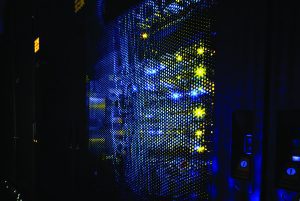This audio was created using Microsoft Azure Speech Services
I thought that you might be interested in a real life data center situation that recently arose here in China. We’d been approached by a customer who wanted to lower their data center PUE to below 1.5 for a variety of reasons, not least of which included reducing energy costs as well as carbon emissions. The facility wasn’t old, so the best way forward was an upgrade to its physical infrastructure; pretty standard stuff really.
In order to increase the efficiency of the cooling system, which was where the greatest opportunity for energy savings lay, a chilled water solution was installed utilizing economized Uniflair chillers, CRACs and APC InRow cooling units. In addition the UPS system was upgraded to a more efficient and right-sized system using APC Symmetra PX500 units.
Importantly, the customer subscribed to the idea that you can’t improve what you can’t measure and so they agreed to our proposal for an energy management system. So we installed our software – StruxureWare for Data Centers including PowerLogic ION Enterprise for detailed power monitoring and control. We use exactly the same system in our own 100,000 sq ft data center in St Louis, USA. In fact, if you’ve ever stopped by any of our exhibition booths, you’ll have seen dashboards of live data outputs from the facility displayed on screens.
With the system up and running, this winter our customer’s data center showed an immediate efficiency improvement, operating with a recorded PUE of ~1.26. The customer and his managers are happy, their upgrade budget is already showing a return on investment and they’re saving operating expense. Everybody’s happy.
Then, in late winter, the energy management system recorded a sudden jump up in chiller energy consumption and the facility PUE rose to over 1.55! The customer got on the phone and a service engineer was immediately dispatched to investigate.
The onsite inspection of the cooling system revealed that the chiller filters were dirty, and so the engineer simply replaced them. The good news is that after replacement, PUE immediately dropped back to 1.26; the crisis was averted, and the customer was returned once again to a happy state of mind!
The point of the story is that without real-time energy monitoring, this issue would NOT have been identified until a planned maintenance visit, which might not have happened for months. And so the customer would not have met their energy goals and, of-course, would have incurred higher energy costs than necessary.
The energy management system tracked and recorded the issue instantly, providing the service technician a very precise brief as to where the potential source of the problem was. There’s been a lot of talk about the soft nature of the ROI from DCIM software – it’s a pity you can’t factor in incidents like this. If you’ve had a similar incident where data center software has provided an unexpected benefit, it would be really interesting to hear your story.


Conversation
edwin
13 years ago
Hi Robert,
A nice case sharing, if you can share to the Chinese publication (I am not sure of it being there)that’s will be helpful for promotion APC by SE solutions in data center.
Thanks!
Edwom
Mike O'Brien
12 years ago
Rob, I just got around to viewing your blog… its been a busy year… I wondered if you have had any success pitching the DCIM tool to your consulting engineering customers. In NAM we are finding many engineers see DCIM as the resposibiltiy of the end user and not the design engineer. What’s been your experience? MOB
Robert Bunger
12 years ago
Hi Mike. Great to hear from you! From my experience here in China, it is the same. DCIM has the most interest from the end users. We do get consulting engineers involved with Power monitoring / measurement, and specifying those systems, but that’s as deep as it goes.
ktdesignstudio
12 years ago
I like the VIZOR ability to provide key data center capacity parameters on power, cooling, space, and network, while delivering predictions of remaining capacity based on current growth rate straight to a smart phone or tablet.